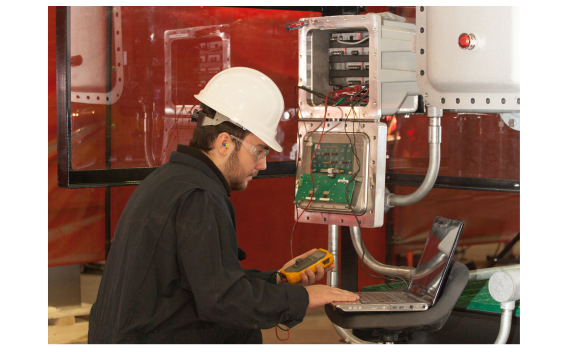There is a fundamental shift occurring in how plants are addressing maintenance. Traditional preventative maintenance has undergone much scrutiny as plant managers and operational leaders look to control costs, increase production and operate as efficiently as possible. As with all process changes, implementing a new approach, and in this case a major culture change, can seem daunting but the result is a significant return on investment and improved performance.
Ensuring that all assets are performing as intended and when needed is no small feat. Traditional preventative maintenance presents obstacles and challenges. Conducting maintenance when it may not be needed; maintaining redundant equipment inventories in case of failure, and limited insight into future maintenance requirements negatively impact operations.
A predictive approach or condition monitoring anticipates potential equipment failures and maintenance needs. Condition monitoring is not a product but a plant-wide solution tailored to the facility. Data and the analysis of experienced maintenance and reliability professionals set the course for repair or replacement. The result is the right maintenance conducted at the right time, on the right equipment. This approach offers a host of benefits:
Cost Effective – Maintenance is conducted as required, increasing the life of equipment and eliminating the need for onsite inventory. It typically costs twice as much to repair equipment once it breaks. Condition monitoring helps eliminate that scenario.
Enhanced Uptime and Production – When production lines are functioning at full capacity, and unscheduled downtime is eliminated, uptime and production increase.
Improved Safety – Reliability and safety function in tandem. Through effective monitoring of plant conditions, safety incidents due to equipment failure can be reduced.
Trust and commitment are essential to the successful implementation of a reliability solution. There must be an overall commitment to this approach – it requires a change in culture. And, that extends beyond new products and processes. Employees may need to be retrained and will gain new and marketable skills in the process. Trust is also critical. There is a leap of faith necessary in the evolution to condition based maintenance.
To achieve top performance, leaders with a long-term vision for the health of their facility understand that while an initial investment is required, that capital expense is quickly returned. Plants that embrace condition monitoring spend the least, maintain minimal inventory and produce the most.

